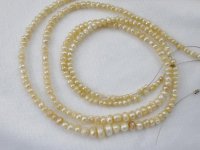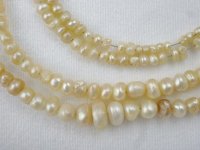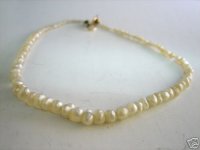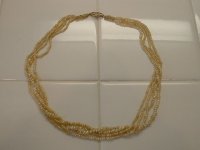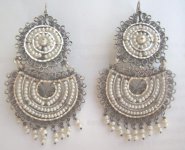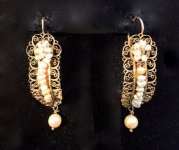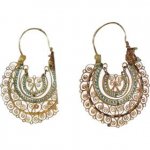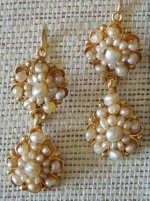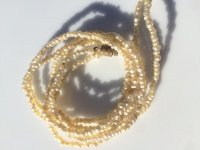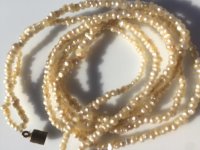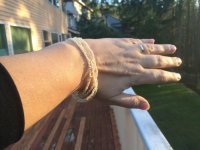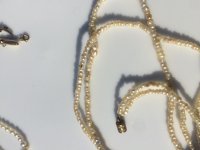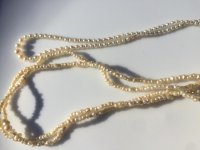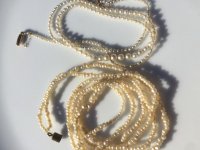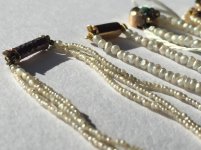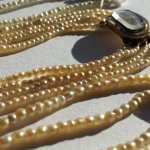I'm pretty confident all these pearls in the photos are older natural pearls. They range from 0.5mm-3mm. I think they're saltwater (?), but from different species as there seem to be two quite different basic shape/colour combinations found in the different strands;
1. Smooth round-ish yellow and peachy toned with flat ends
2. More baroque and crinkly whiter creamy silver shades...quite like yours, Sophie?
Can anyone shed any light?
That is a difficult question.
One or two points of consideration is inadequate. In this case, color and shape are brought forward.
Unless specific colors predominate, one cannot base an opinion on it. For example, natural pipi will almost always predominate in bright orange. However, white occurs across every species of mollusk. Therefore, various shades of white can only support... not confirm origin.
Flat spots. These prevail in mussels, but not exclusively. All CFWP are mussels. However, mussels grow in the chuck too. Likewise a small percentage of natural pearls from pterioda present with flat spots. It happens most often when pearls are found in the mantles, but lesser so when found in other tissues. Hence that theory goes out the window too.
The only way around this problem is to employ the differential diagnosis in pathology. After all, pearls are physical lesions with etiological history. This is why examination of the nuclear material is imperative. Once drilled, pearls are destroyed from a scientific standpoint. Especially seed pearls, where often more than 50% of the pearl is removed.
Chances are seed pearls are natural, but this can never be the criteria from which to identify them insomuch as adding a single point in an otherwise broader process. The greater part of any natural harvest anywhere on the planet are seed pearls. Verifiable provenance offers hope on this matter. In the absence of it, jumping to conclusions has no bearing in science. They stand falsifiable.
One must consider the grade. High grading seed pearls to create strands obscures their origin, because data needed to make a proper analysis is missing. Human intervention, intentionally or not, give subjective impressions to appear in ways the market, not science perceives them.
Again, pearls can be any color, any size and any shape for any reason irrespective of species.
Seed pearls have lower value than other natural pearls. They are not targeted. They are incidental. It's doesn't make them less beautiful or desirable though. So long as "klonks" remain the pearl of choice for some (or most), seed pearls will needlessly be looked upon in diminutive ways. Like many other pearl pieces, they are not an investment and looking for deals invites fraud or misrepresentation. Likewise many of the "turn of the century" inventories have the labels of greed, destruction and slaughter associated with them.

